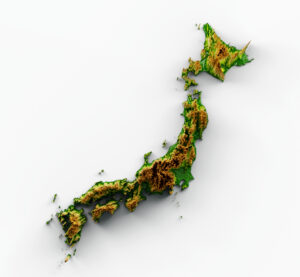Japan, an archipelago of stunning landscapes and rich traditions, is defined by its four main islands: Honshu, Hokkaido, Kyushu, and Shikoku. Each island offers a unique tapestry of culture, history, and natural beauty, providing travelers with an unforgettable odyssey through this remarkable nation. From the bustling streets of Tokyo to the tranquil temples of Shikoku, exploring Japan’s four main islands reveals the country’s diversity and the interplay of tradition and modernity.
Discovering the Unique Charms of Japan’s Four Islands
As Japan’s four main islands stretch across the Pacific Ocean, they each present distinct cultural and geographical characteristics. Honshu is the largest and most populous, serving as the heart of Japan’s political, economic, and cultural activities. Hokkaido, to the north, is known for its breathtaking nature and colder climate, appealing to nature lovers and outdoor enthusiasts. To the southwest lies Kyushu, renowned for its hot springs, volcanic landscapes, and rich history. Finally, Shikoku, the smallest of the four, captivates visitors with its spiritual journeys and culinary delights. Together, these islands create a mesmerizing mosaic that reflects Japan’s ancient heritage and contemporary innovations.
Traveling through each island allows for a deeper understanding of Japan’s regional diversities. The people, dialects, and cuisines differ remarkably, celebrating local customs and traditions. Festivals, artworks, and traditional crafts also vary from one island to another, showcasing the unique identities that thrive within Japan. This cultural odyssey provides an opportunity to engage with local communities and experience the warmth of Japanese hospitality.
Nature plays an essential role in shaping the character of each island. Hokkaido’s vast national parks contrast sharply with the urban landscapes of Honshu, while Kyushu’s volcanic activity lends a dynamic aspect to its terrain. Shikoku, with its picturesque coastlines and rural landscapes, offers tranquility and a slower pace of life. The interplay between culture and nature offers a compelling narrative that enriches the exploration of Japan’s islands.
As travelers embark on this journey, they’ll find that each island is not just a destination, but a gateway into the soul of Japan. The distinctiveness of each locale encourages storytelling through art, cuisine, and history. From the ancient temples of Shikoku to the modern skyscrapers of Tokyo, the charm of Japan’s islands invites exploration and appreciation of their unique heritage.
Ultimately, exploring Japan’s four main islands is akin to embarking on a cultural odyssey, where every step unveils layers of history and tradition. This journey transcends mere sightseeing; it offers a profound experience that resonates with the traveler. Each island tells its own story, revealing the beauty of diversity within unity.
With a host of experiences waiting to be uncovered, it’s time to delve deeper into the specific charms and offerings of each of Japan’s four main islands.
Honshu: The Heart of Japan’s Culture and History
Honshu is the largest island, home to Japan’s capital, Tokyo, and several of its most famous cities, including Kyoto, Osaka, and Hiroshima. This island serves as the beating heart of the nation’s culture, history, and economy. From the ancient temples of Kyoto to the bustling streets of modern Tokyo, Honshu encapsulates the essence of Japan’s journey through time.
In Kyoto, visitors can immerse themselves in the rich heritage of Japan. The city boasts over 1,600 temples, including the iconic Kinkaku-ji (Golden Pavilion) and Fushimi Inari-taisha, famous for its thousands of vermillion torii gates. These historic sites offer a glimpse into the spiritual life of the Japanese people and the architectural grandeur of centuries past. Walking through the streets of Gion, one can encounter geisha culture, a tradition that has survived through the ages, showcasing the island’s dedication to preserving its heritage.
Osaka presents a different flavor of Honshu, boasting a vibrant nightlife and culinary scene. Known as the "Kitchen of Japan," Osaka offers a plethora of street food options, from savory takoyaki to the delectable okonomiyaki. The city’s bustling Dotonbori district is a feast for the senses, filled with neon lights and the sound of laughter as locals and tourists alike indulge in the culinary delights. Cultural landmarks like Osaka Castle provide a historical backdrop, making the city a blend of the old and the new.
Hiroshima, with its poignant history, serves as a reminder of resilience and peace. The Hiroshima Peace Memorial Park and Museum tells the story of the atomic bombing in 1945, fostering a message of hope and reconciliation. The iconic Atomic Bomb Dome stands as a symbol of survival amid tragedy, attracting visitors from all over the world who come to reflect on the past and promote peace.
Honshu is not just about urban experiences; it also offers beautiful landscapes. The Japanese Alps provide breathtaking views and hiking opportunities, while the serene shores of Lake Biwa invite relaxation and reflection. The island’s diverse geography, from mountains to coastlines, showcases Japan’s natural beauty, enriching the cultural experience.
As travelers explore Honshu, they will find that its cultural and historical significance intertwines effortlessly with contemporary life. The island serves as a microcosm of Japan, reflecting its past while embracing the future. From ancient traditions to cutting-edge technology, Honshu is truly the heart of Japan.
Hokkaido: Nature’s Bounty and Winter Wonderland
Hokkaido, Japan’s northernmost island, is renowned for its stunning natural landscapes and outdoor activities. Known for its colder climate, Hokkaido is a haven for winter sports enthusiasts, offering world-class skiing and snowboarding in resorts like Niseko and Furano. The island transforms into a winter wonderland, attracting visitors from around the globe to experience its powder snow and picturesque scenery.
Beyond its winter appeal, Hokkaido boasts beautiful national parks, such as Shiretoko and Daisetsuzan, where nature reigns supreme. Shiretoko, a UNESCO World Heritage site, is home to diverse wildlife, including bears and foxes, and offers breathtaking views of untouched landscapes. Hiking trails wind through dense forests and along rugged coastlines, providing opportunities for adventure and exploration. The island’s natural beauty is not confined to winter; in the summer, vibrant flower fields bloom, particularly in Furano, creating a patchwork of colors that draws photographers and nature lovers alike.
Hokkaido’s unique climate also contributes to its culinary scene, famous for its fresh seafood and dairy products. The island is known for its exceptional ramen, with Sapporo ramen being particularly celebrated. Food festivals, such as the Sapporo Snow Festival, showcase local delicacies and attract foodies eager to indulge in Hokkaido’s culinary offerings. The abundance of nature translates into farm-to-table experiences, where visitors can savor the flavors of the land.
The indigenous Ainu culture adds another layer to Hokkaido’s identity. The Ainu people, the original inhabitants of the island, have a rich history and distinct traditions. Cultural experiences, such as traditional music and dance performances, provide insight into the Ainu way of life. Efforts to preserve and promote Ainu culture are ongoing, making it an integral part of Hokkaido’s cultural landscape.
As Hokkaido continues to gain popularity among tourists, there is a growing emphasis on sustainable tourism. Local initiatives aim to protect the island’s natural resources while offering visitors authentic experiences. Eco-tourism activities, such as wildlife watching and hot spring bathing, allow travelers to connect with nature while supporting conservation efforts.
In conclusion, Hokkaido is a land of contrasts, where winter sports coexist with summer adventures, and indigenous cultures blend with modern influences. For those seeking the allure of nature and outdoor activities, Hokkaido provides an extraordinary experience that embodies the spirit of Japan’s wild side.
Kyushu: A Blend of Tradition and Natural Beauty
Kyushu, the southernmost of Japan’s four main islands, offers a unique blend of tradition and breathtaking natural beauty. The island is known for its volcanic landscapes, hot springs, and lush greenery, making it a popular destination for those seeking both relaxation and adventure. The active volcano, Mount Aso, is one of the largest in the world and provides visitors with dramatic scenery and hiking opportunities.
One of Kyushu’s key attractions is its abundance of onsen (hot springs), with Beppu and Yufuin being two of the most famous onsen towns. Travelers can immerse themselves in the healing waters, enjoying the therapeutic benefits while surrounded by stunning views of mountains and valleys. The onsen culture in Kyushu is deeply rooted in tradition, with many ryokans (traditional inns) offering a complete experience that includes local cuisine and warm hospitality.
In addition to its natural beauty, Kyushu boasts a rich historical tapestry. Nagasaki, known for its unique blend of Japanese and European influences, played a significant role during Japan’s period of isolation. The historic Glover Garden and the iconic Atomic Bomb Museum provide insight into the city’s complex past. Meanwhile, the ancient city of Kumamoto houses the impressive Kumamoto Castle, a symbol of feudal Japan’s architectural brilliance.
Kyushu is also celebrated for its vibrant festivals, such as the Hakata Gion Yamakasa in Fukuoka, which features elaborately decorated floats and spirited races. These festivals showcase the island’s deep-rooted traditions and community spirit, drawing visitors eager to witness the lively celebrations and partake in local customs. The warm climate further enhances the island’s appeal, allowing year-round festivities and outdoor activities.
Nature lovers can explore Kyushu’s stunning national parks, such as Kirishima and Unzen-Amakusa. These parks are home to diverse flora and fauna, as well as hiking trails that lead to panoramic views of the surrounding landscapes. The island’s rugged terrain is perfect for adventure seekers, offering activities like kayaking, cycling, and camping, all set against a backdrop of breathtaking vistas.
In summary, Kyushu is a treasure trove of experiences, where tradition meets natural beauty. From its steaming hot springs to its rich historical sites, the island invites visitors to explore the harmony between culture and nature. As travelers delve into Kyushu’s offerings, they will uncover the stories that shape this vibrant region of Japan.
Shikoku: Pilgrimages and Culinary Delights Await
Shikoku, the smallest of Japan’s four main islands, is renowned for its spiritual significance and culinary delights. The island is famous for the Shikoku Pilgrimage, a 1,200-kilometer route that connects 88 temples associated with the Buddhist monk Kukai (Kobo Daishi). This pilgrimage attracts both spiritual seekers and avid hikers, who traverse the island’s scenic landscapes while reflecting on their journeys.
Each temple along the pilgrimage route offers a unique experience, with distinct architecture and serene surroundings. The temples are not only places of worship but also cultural landmarks that tell stories of Japan’s Buddhist history. Pilgrims often engage in rituals, such as sutra copying and offering prayers, which deepen their connection to the spiritual path.
Shikoku’s natural beauty enhances the pilgrimage experience. The island is characterized by lush mountains, tranquil rivers, and picturesque coastlines. The remote areas of Shikoku provide an escape from the hustle and bustle of city life, allowing travelers to reconnect with nature. The Iya Valley, with its vine bridges and stunning landscapes, is a highlight for those seeking adventure and tranquility.
In addition to its spiritual allure, Shikoku is a culinary paradise. The island is famous for its udon noodles, particularly in Kagawa Prefecture, where the dish is celebrated as a staple. Visitors can indulge in freshly made udon at local shops, experiencing the chewy texture and rich flavors that define this beloved dish. The island also boasts an array of seafood, as its coastal regions provide a bounty of fresh catches.
Festivals play a significant role in Shikoku’s cultural landscape, with events like the Awa Odori dance festival in Tokushima drawing large crowds. This lively celebration features traditional folk dances and music that reflects the island’s deep-rooted cultural heritage. The festivals are an opportunity for communities to come together and share their traditions, making them an integral part of Shikoku’s identity.
As travelers navigate the serene landscapes and vibrant towns of Shikoku, they will discover a harmonious blend of spirituality and gastronomy. The island’s rich tapestry of experiences invites visitors to embark on their own journeys, whether through pilgrimage or culinary exploration. Shikoku stands as a testament to Japan’s diverse cultural heritage and the deep connections that bind its people to their land.
Honshu’s Urban Pulse: Tokyo and Beyond
Tokyo, the capital of Japan and one of the world’s most populous cities, pulsates with an energy that captivates millions. As the heart of Honshu, Tokyo embodies the fusion of tradition and modernity, offering a plethora of experiences for every traveler. The city is a vibrant tapestry of neon lights, bustling streets, historic temples, and serene parks.
The juxtaposition of the old and new is evident in districts like Asakusa, where the historic Senso-ji Temple stands alongside modern shopping complexes. Visitors can explore the temple grounds, take part in traditional rituals, and savor local street food delicacies. Meanwhile, the nearby Akihabara district showcases Japan’s pop culture, with electronic shops, anime stores, and themed cafés that cater to diverse interests.
Tokyo is also home to world-class art and culture. The Tokyo National Museum and the Mori Art Museum feature impressive collections that highlight both traditional and contemporary Japanese art. The city’s theaters, such as the Kabukiza Theatre, offer performances of kabuki, a traditional Japanese form of drama that combines music, dance, and elaborate costumes. These cultural experiences provide a deeper understanding of Japan’s artistic heritage.
Beyond the city limits, the Greater Tokyo Area offers opportunities for exploration. Day trips to nearby Yokohama reveal a blend of modern architecture and international influences, while the historic town of Kamakura boasts ancient temples and beautiful beaches. Nature enthusiasts can escape to the scenic landscapes of Nikko National Park, where waterfalls and lush forests await.
Tokyo’s culinary scene is another highlight, ranging from Michelin-starred restaurants to cozy izakayas. The city is known for its diverse cuisine, including sushi, ramen, and tempura, each dish reflecting the artistry and precision of Japanese cooking. Food markets like Tsukiji Outer Market and Ameya-Yokocho offer a sensory feast, where visitors can sample fresh seafood and local delicacies.
As travelers navigate through Tokyo and its surrounding areas, they will encounter a city that never ceases to amaze. The urban pulse of Tokyo encapsulates the essence of modern Japan, while still honoring its rich history and traditions. For those eager to experience the vibrant heart of Honshu, Tokyo is an indispensable destination that leaves a lasting impression.
Hokkaido’s Wild Side: Outdoor Adventures Galore
Hokkaido’s stunning landscapes and diverse ecosystems make it a paradise for outdoor enthusiasts. The island is home to vast national parks, majestic mountains, and picturesque coastlines, offering a wide array of activities year-round. From skiing in the winter to hiking and flower viewing in the summer, Hokkaido is a playground for adventurers seeking a connection with nature.
In winter, Hokkaido transforms into a snowy wonderland, attracting ski and snowboard enthusiasts to resorts such as Niseko, Furano, and Rusutsu. These areas boast some of the best powder snow in the world, providing ideal conditions for winter sports. Visitors can also enjoy snowshoeing, ice fishing, and snowmobiling, making the most of the pristine winter landscapes.
As the snow melts, Hokkaido’s hiking trails come to life. The Daisetsuzan National Park, known as the "roof of Hokkaido," offers numerous trails that lead to breathtaking views, volcanic landscapes, and diverse wildlife. Hiking enthusiasts can explore the rugged terrain, including the majestic Mount Asahi, while soaking in the stunning natural beauty that defines the island.
In addition to hiking, Hokkaido is famous for its flower fields, particularly in Furano and Biei. During the summer months, vibrant lavender blooms create a stunning purple landscape, while other flower varieties paint the fields in an array of colors. These picturesque vistas draw photographers and nature lovers from around the world, eager to capture the beauty of Hokkaido’s floral displays.
The island’s coastline also offers opportunities for adventure, with activities such as kayaking, whale watching, and cycling along scenic routes. The Shakotan Peninsula, known for its crystal-clear waters and dramatic cliffs, is a popular spot for outdoor activities and exploration. The blend of land and sea creates a dynamic environment for those seeking adventure in Hokkaido.
As Hokkaido continues to promote sustainable tourism and outdoor experiences, visitors are encouraged to engage with the environment responsibly. Local initiatives aim to protect the island’s natural resources while providing opportunities for eco-friendly activities. For those eager to explore the wild side of Japan, Hokkaido offers an unforgettable journey into the heart of nature.
Kyushu’s Volcanic Wonders: A Geological Journey
Kyushu’s landscape is a testament to the island’s volcanic origins, offering visitors a unique opportunity to explore geological wonders. With numerous active volcanoes, hot springs, and scenic beauty, Kyushu provides a rich backdrop for those interested in geology and natural phenomena. Mount Aso, one of Japan’s most active volcanoes, stands as a prominent feature of the island, attracting geologists and adventurers alike.
The caldera of Mount Aso, one of the largest in the world, is home to several peaks and a vibrant ecosystem. Visitors can hike around the caldera, witnessing the geological formations shaped by volcanic activity. The area offers stunning views and opportunities for exploration, including the chance to observe volcanic gases and fumaroles, which are natural openings in the Earth’s crust.
Hot springs, or onsen, are another highlight of Kyushu’s volcanic landscape. The region’s geothermal activity leads to an abundance of hot springs, making it a premier destination for relaxation and wellness. Areas like Beppu and Yufuin offer a variety of onsen experiences, from traditional ryokans to outdoor baths with scenic views. These therapeutic waters are not only a chance to unwind but also a way to connect with the island’s geological heritage.
In addition to Mount Aso, Kyushu is home to other notable volcanoes, such as Sakurajima in Kagoshima Prefecture. This active volcano regularly erupts, adding to the drama of the surrounding landscape. The Sakurajima Visitor Center provides insight into the volcano’s activity and history, making it an educational experience for visitors.
The geological journey through Kyushu extends beyond volcanic features. The island also boasts karst landscapes, such as those found in the Aso-Kuju National Park. The unique geological formations, including limestone caves and rugged cliffs, showcase the island’s diverse geology. Exploring these areas offers a chance to see firsthand how natural processes shape the earth’s surface.
In conclusion, Kyushu’s volcanic wonders present a fascinating exploration of geological phenomena. The island’s diverse landscapes and active volcanoes provide both adventure and education, making it an ideal destination for those intrigued by the forces of nature. Kyushu stands as a reminder of the dynamic processes that continue to shape the world around us.
Shikoku’s 88 Temples: Spirituality on a Scenic Route
Shikoku’s 88 Temple Pilgrimage is a journey steeped in spirituality and tradition, drawing thousands of pilgrims and travelers each year. The pilgrimage traces the footsteps of the revered Buddhist monk Kukai (Kobo Daishi), who founded the Shingon sect of Buddhism. The route encompasses approximately 1,200 kilometers, winding through scenic landscapes, quaint villages, and historic temples.
Each of the 88 temples offers a unique experience, with distinct architecture and spiritual significance. Pilgrims often engage in rituals like sutra copying and prayer, deepening their connection to the spiritual journey. The practice of walking the pilgrimage route allows visitors to reflect on their lives and seek personal growth, embodying a sense of mindfulness and introspection.
The scenic beauty of Shikoku enhances the pilgrimage




